Most travellers skip past Guangzhou on their way to more iconic stops like Shanghai or Beijing, but that’s exactly what makes it special. As the capital of Guangdong Province and one of China’s oldest port cities, Guangzhou has long been a gateway between China and the rest of the world. It was the starting point of the Maritime Silk Road, and today it’s a buzzing metropolis known for its Cantonese culture, historic neighbourhoods, and culinary legacy, (especially as the birthplace of dim sum).
But Guangzhou isn’t just about tradition. It’s also a major tech and finance hub, with a sleek metro system, futuristic architecture like Canton Tower, and sprawling new districts like Zhujiang New Town. At the same time, the city preserves a slower pace of life, seen in its tree-lined lanes, early-morning tai chi sessions, and centuries-old herbal tea shops. Whether you’re here on a layover or planning a longer trip, here are some of the best things to do in Guangzhou.
Also read: Real-Life Filming Locations in China from Popular Movies and Dramas
1. Visit the iconic Canton Tower
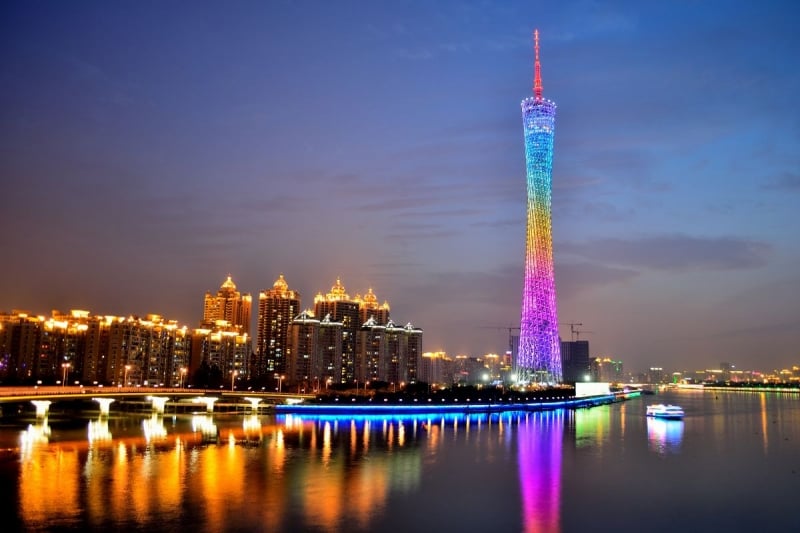
Image Credit: momoscarale via Canva Pro
You can’t talk about Guangzhou without mentioning Canton Tower, one of the tallest towers in the world at 604 metres. It offers stunning panoramic views of the city and is also known for its adrenaline-pumping attractions. The tower features a Sky Drop, which holds the record as the world’s highest vertical free fall ride, and a Bubble Tram, where glass pods slowly rotate around the tower’s upper rim for an unforgettable aerial view.
Inside, you’ll find observation decks, exhibition spaces, and cafés where you can pause and take in the view. At night, the tower comes alive with multi-coloured lights, making it a favourite photo spot for both visitors and locals.
Location: Haizhu District
Admission: From ~¥150 (≈S$28)
2. Stroll around Shamian Island
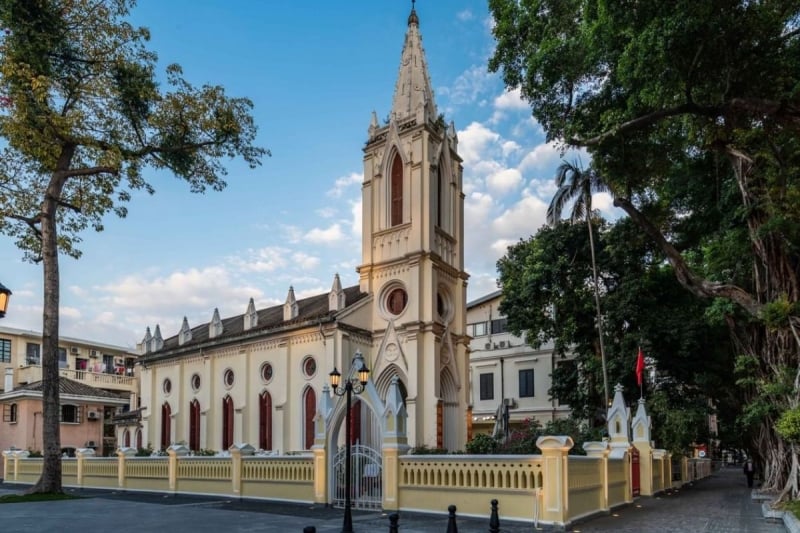
Image Credit: White Swan Hotel Official Website
The leafy oasis of Shamian Island is one of Guangzhou’s most atmospheric spots, offering a peaceful respite from the busy city. Acquired as a foreign concession in 1859 after the Opium Wars, it became home to British and French traders, who built elegant European-style mansions and warehouses on what was once just a sandbank. At the time, Chinese residents were barred from entering without permission, and the island was gated off by iron bridges.
Today, the gates are gone, but many of the colonial-era buildings remain, thanks to major restoration efforts. Locals and visitors alike come to enjoy the shaded boulevards, neoclassical architecture, and riverside cafés, making it an ideal place for a slow afternoon stroll or photo walk.
Location: Liwan District
Tripzilla Tip: Early morning or golden hour is the best time to go!
3. Eat your way through a traditional dim sum brunch
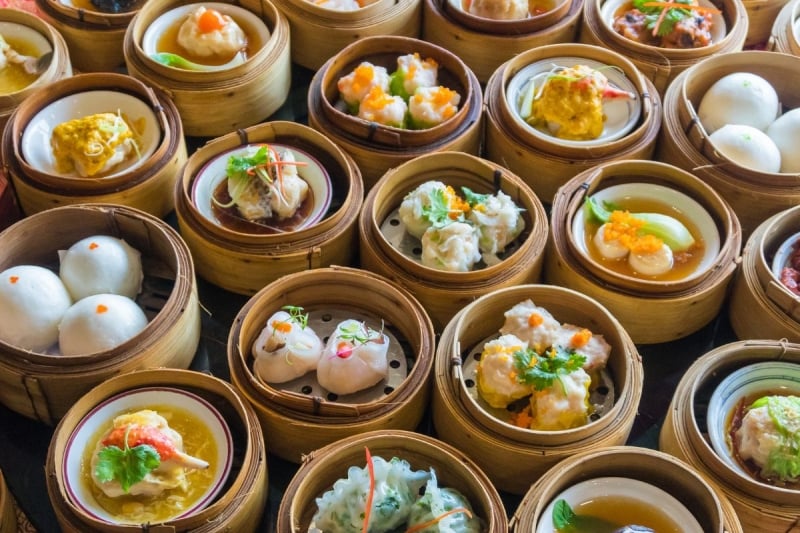
Image Credit: trusjom via Canva Pro
Guangzhou is widely regarded as the birthplace of dim sum, thanks to its long history as a major stop along the ancient Silk Road and maritime trade routes. These routes brought a constant flow of merchants and travellers through the city, and local teahouses began offering small plates of food ( known as dim sum, meaning “touch the heart”) as quick, satisfying bites to accompany tea. Over time, this evolved into the full yum cha culture we know today, where tea is enjoyed alongside a spread of handcrafted dishes.
Locals take their dim sum seriously, and many of the city’s historic teahouses are still in operation. Guangzhou Restaurant, Panxi Restaurant, and Tao Tao Ju have been serving up bamboo baskets of har gow, siu mai, and cheong fun for over a century. At some places, trolleys still roam between tables, and staff shout out dish names in Cantonese. Don’t forget to sip on pu’er or chrysanthemum tea as you feast on these time-honoured delicacies.
Tripzilla Tip: Go before 11 am to avoid the crowd
4. Wander through the Chen Clan Ancestral Hall
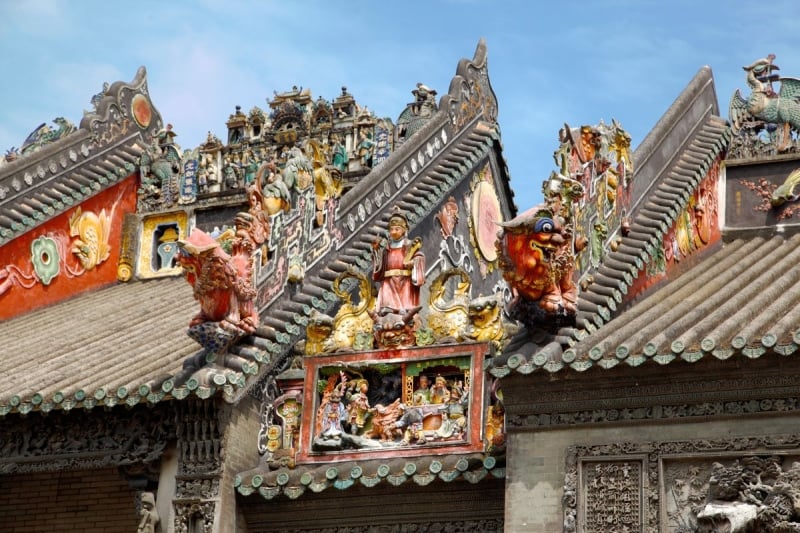
Image Credit: ThomasSaupe via Canva Pro
Built in 1894 during the Qing Dynasty, the Chen Clan Ancestral Hall was commissioned by the Chen family as a shared space for their extended clan to prepare for imperial examinations, which was the civil service gateway to status and success in traditional China. The complex served both educational and spiritual functions, acting as an ancestral shrine and academic hall rolled into one.
Today, it’s one of the finest surviving examples of Lingnan architecture, a regional style native to southern China known for its open courtyards, intricate wood, brick, and stone carvings, and ornamental roofs. The site now houses the Guangdong Folk Art Museum, where you’ll find everything from embroidered silk screens and clay figurines to elaborate ivory carvings. Even if you’re not a museum person, the craftsmanship in the architecture alone makes it worth the visit.
Location: Zhongshan 7th Road
Admission: ¥10 (≈S$1.90)
5. Chill out by the Pearl River
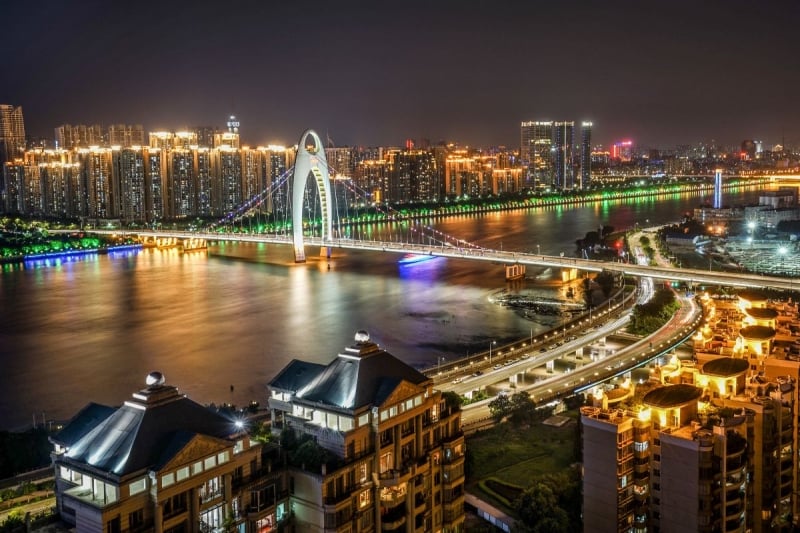
Image Credit: kaidencl via Canva Pro
Winding through the heart of the city, the Pearl River is Guangzhou’s lifeline and one of the best ways to see the city from a new angle. After sunset, the waterfront comes alive with shimmering lights, breezy promenades, and boat cruises that pass by some of Guangzhou’s most iconic landmarks. A typical night cruise takes about 45 to 60 minutes and glides past sights like Canton Tower, Haixinsha Island, and the Guangzhou Opera House, all beautifully lit after dark.
If you prefer to stay on land, head to Tianzi Wharf for evening strolls or find a quiet spot along Ersha Island’s landscaped riverbanks. Whether you’re on the water or beside it, the Pearl River offers a more relaxed, romantic side of Guangzhou, especially in the cooler months.
Location: Cruises depart from various piers
Night cruise: From ¥60–150 (≈S$11–28)
6. Shop at Beijing Road or Shangxiajiu Pedestrian Street
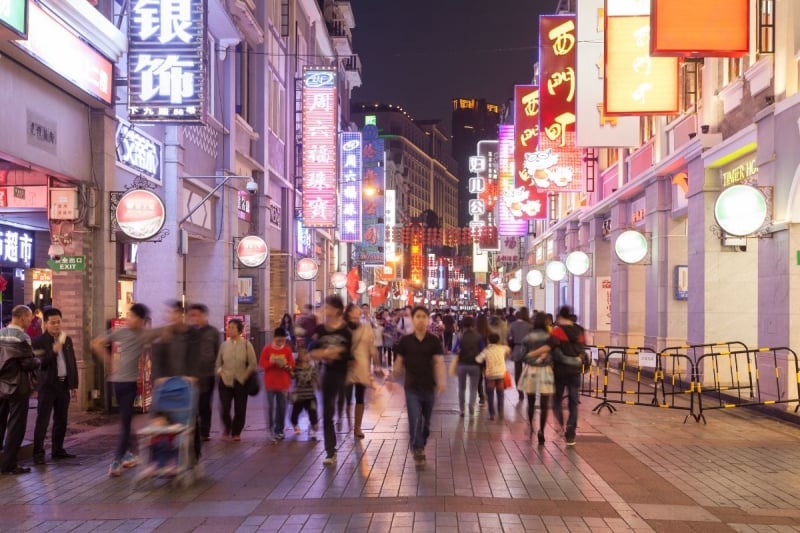
Image Credit: wonry via Canva Pro
For a blend of shopping and history, Beijing Road and Shangxiajiu Pedestrian Street are two of Guangzhou’s most popular retail areas, each offering its own unique atmosphere.
Beijing Road, located in the heart of the city, is lined with high-street brands, local fashion boutiques, and plenty of street snacks. One of its most distinctive features is the series of glass panels on the pavement, which reveal well-preserved road layers from the Song and Ming dynasties beneath your feet. It’s a place where you can literally walk through history while sipping on bubble tea or browsing trendy stores.
Over in the Xiguan neighbourhood, Shangxiajiu Pedestrian Street has a more traditional feel. The street is flanked by Lingnan-style arcade buildings, many of which house time-honoured local brands. It’s a great place to explore classic Cantonese snacks like double-skin milk pudding, fried oyster omelettes, and herbal teas from century-old shops.
Location:
Beijing Road: Yuexiu District
Shangxiajiu: Liwan District
7. Take a break at Yuexiu Park and the Five Rams Statue
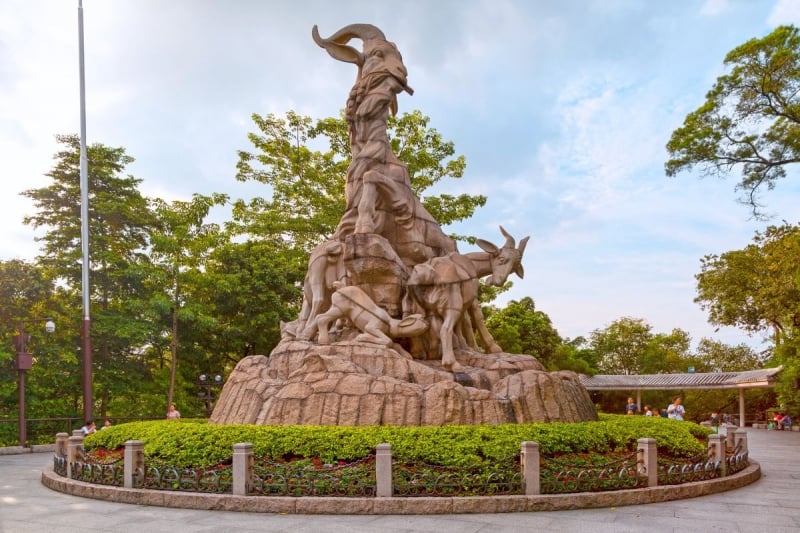
Image Credit: BreizhAtao via Canva Pro
Spanning over 200 acres, Yuexiu Park is the largest park in central Guangzhou and a favourite leisure spot for locals. Its peaceful lakes, winding paths, and forested hills offer a welcome break from the pace of the city.
The park is home to several cultural landmarks, including the iconic Five Rams Statue. According to local legend, five celestial beings arrived in Guangzhou riding rams and brought an end to famine by blessing the land with abundance. The statue has since become a symbol of the city’s spirit. Also within the park is the Zhenhai Tower, a five-storey structure built in the Ming Dynasty that now houses the Guangzhou Museum. You can also visit a surviving section of the ancient city wall, tucked into the greenery.
Throughout the day, you’ll see locals jogging, dancing, or playing Chinese chess beneath the banyan trees. It’s a great place to experience Guangzhou’s more relaxed side and observe the rhythms of everyday life.
Location: Yuexiu District
Admission: Free entry
8. Ride the Guangzhou Metro to see urban planning at work
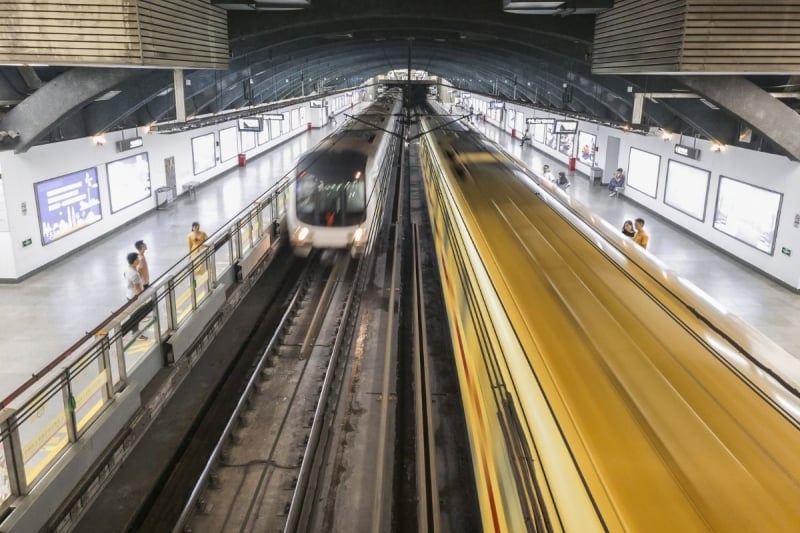
Image Credit: Jason Yuen | Unsplash
With over 15 lines and more than 600 stations, the Guangzhou Metro is one of China’s most efficient transit systems. It’s fully bilingual (Chinese and English), making it extremely tourist-friendly. The metro connects almost every major attraction, and some stations (like Canton Tower or Sun Yat-sen Memorial Hall) are architectural highlights in themselves. Trains run from early morning until midnight, and tap-and-go payment is available via WeChat, Alipay, and transit cards.
Fare: From ¥2 (≈S$0.40) per ride
Also read: China Power Bank Rules 2025: What Travellers Must Know Before Flying
Final thoughts
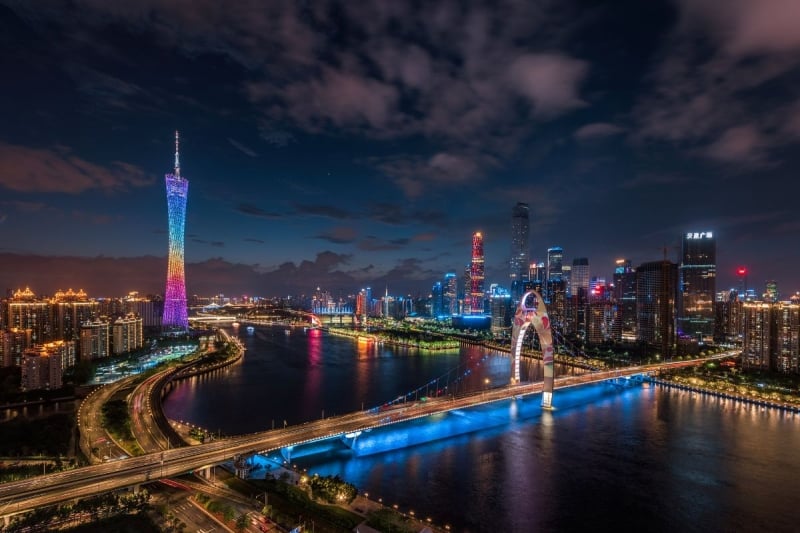
Image Credit: lau wenyu via Canva Pro
Guangzhou may not have the hype of Shanghai or the gravitas of Beijing, but it has a genuine, living rhythm. It’s a place where skyscrapers and steamed buns coexist, where you can sip tea under banyan trees or ride a bubble tram 450 metres in the air. If you’re looking for an off-the-radar destination that still ticks all the big city boxes, Guangzhou might just surprise you.




